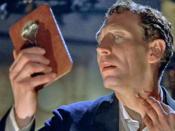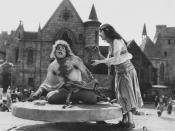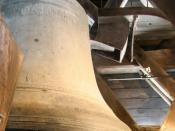"Everybody has that thing where they need to look one way but they come out looking another way and that's what people observe. You see someone on the street and essentially what you notice about them is the flaw. It's just extraordinary that we should have been given these peculiarities. Something is ironic in the world and it has to do with the fact that what you intend never comes out like you intend it" (Arbus). In this world, often people are so self absorbed that whenever we meet or look at someone, we are unable to see their inner self. Sometimes we don't have the time, and sometimes we just feel the need to try to see through outer appearances of the people around us and find their true nature. We just take the easy path of judging others with the help of their outer look. We don't look hard enough at people to discover their true intensions, which should be used while judging them.
In both Dracula and The Hunchback Of Notre-Dame, each author discusses society's preoccupation with outward appearance. Although Dracula's appearance mirrors the nature of his inner self and Quasimodo's appearance betrays nature of his inner self, respective authors articulate society's tendency to base their opinions of others solely on external appearance.
Count Dracula, the main character and the antagonist of the novel Dracula obtains a dark, appalling and monstrous appearance. Dracula is seen through the point of view of another character in the novel, Jonathan Harker. Harker is a common man who represents society as a solicitor, and whose law firm sends him to Transylvania to conclude a real estate transaction with Dracula. Dracula has vicious red eyes that glow in darkness; a long white mustache is above his red swollen lips that are...


